What is the normal range of liver enzymes. Understanding Liver Enzyme Levels: AST and ALT Normal Ranges, Causes, and Implications
What are the normal ranges for liver enzymes AST and ALT. How do high or low levels impact liver health. What factors can influence liver enzyme test results. When should you consider getting a liver enzyme test
Decoding Aspartate Aminotransferase (AST) Levels
Aspartate aminotransferase (AST) is a crucial enzyme primarily found in the liver, but also present in other organs such as the kidneys, heart, and muscles. Understanding AST levels is essential for assessing liver function and overall health. But what exactly do these levels mean, and how are they measured?
AST levels are typically measured in units per liter (U/L) or international units per liter (IU/L). While there isn’t an exact universal range for AST levels, as they can vary among individuals, laboratories generally provide specific reference ranges for their tests. It’s important to note that these ranges can differ slightly between laboratories due to varying testing methods.
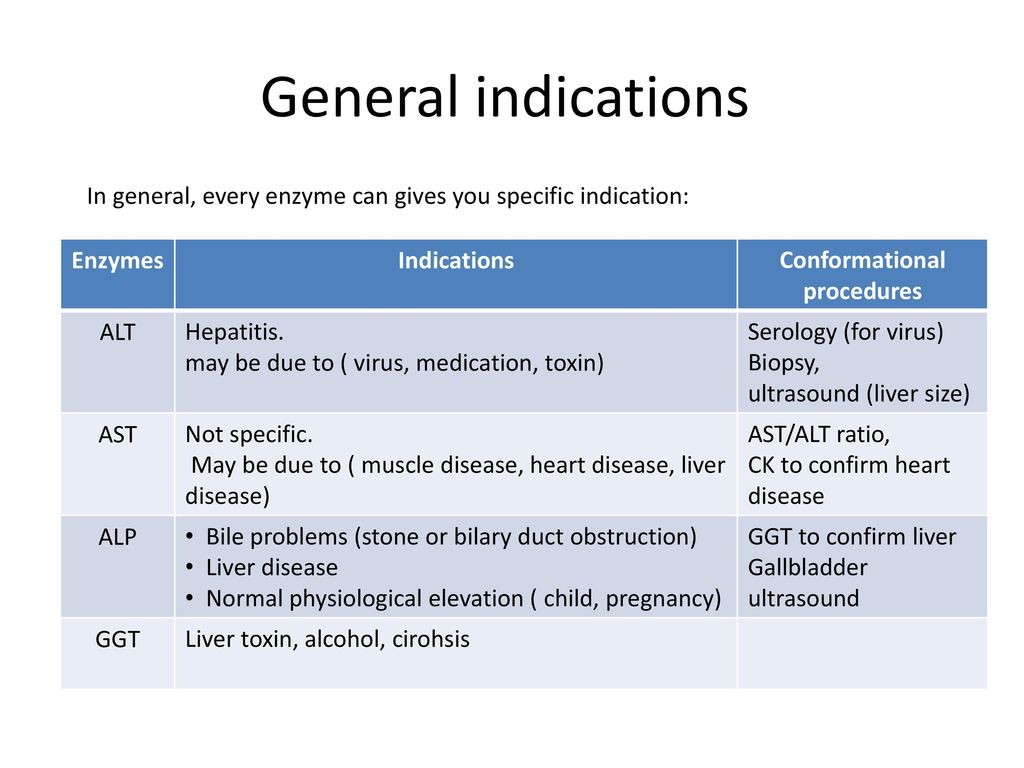
General AST Level Ranges
- Normal range for adults: 10-40 IU/L
- High levels for adults: >40 IU/L (may indicate liver inflammation)
- Very high levels: >1,000 U/L (potential sign of liver injury or hepatitis)
Is there a difference in AST levels between adults and children? Yes, children may have different reference ranges, and it’s crucial to consult with a pediatrician for accurate interpretation of results in younger patients.
Exploring Alanine Aminotransferase (ALT) and Its Significance
While AST is a valuable indicator of liver health, it’s often paired with another enzyme test: Alanine Aminotransferase (ALT). ALT is more specific to the liver than AST, making it an excellent companion test for a comprehensive liver health assessment.
Why do healthcare professionals often use both AST and ALT tests? By comparing the levels of these two enzymes, doctors can gain a clearer picture of liver function and potentially identify the source of any abnormalities. For instance, if ALT levels are normal but AST levels are elevated, it could indicate a health issue outside the liver or possibly alcohol-induced liver damage.

Interpreting AST to ALT Ratio
The ratio of AST to ALT can provide valuable insights:
- AST/ALT ratio < 1: Typically seen in viral hepatitis
- AST/ALT ratio > 2: May indicate alcoholic liver disease
- AST/ALT ratio > 1 but < 2: Could suggest cirrhosis or other liver conditions
Factors Influencing Liver Enzyme Levels
When interpreting liver enzyme test results, it’s crucial to consider various factors that can influence AST and ALT levels. What are some of these factors?
- Age: Enzyme levels can naturally vary with age
- Sex: There may be slight differences between males and females
- Weight: Obesity can impact liver enzyme levels
- Race: Some ethnic groups may have different baseline levels
- Medications: Certain drugs can affect liver enzyme production or release
- Alcohol consumption: Regular alcohol intake can elevate liver enzymes
- Exercise: Intense physical activity can temporarily increase AST levels
Can a person have high AST levels without any liver problems? Yes, it’s possible. Some individuals may have elevated AST levels due to factors unrelated to liver health, such as muscle damage from intense exercise or certain genetic variations. This is why it’s essential to consider AST results in conjunction with other liver tests and a comprehensive medical history.

High Liver Enzyme Levels: Causes and Implications
Elevated liver enzyme levels can be a sign of various health conditions. What are some common causes of high AST and ALT levels?
- Hepatitis (viral, alcoholic, or autoimmune)
- Liver cirrhosis
- Nonalcoholic fatty liver disease (NAFLD)
- Alcoholic liver disease
- Liver cancer
- Certain medications (e.g., statins, some antibiotics)
- Heart or muscle damage
- Hemochromatosis (iron overload)
How high do liver enzyme levels need to be to indicate a serious problem? While any elevation above the normal range warrants attention, levels exceeding 1,000 U/L are considered very high and may indicate severe liver injury or acute hepatitis. However, it’s important to note that the degree of elevation doesn’t always correlate directly with the severity of liver damage.
Low Liver Enzyme Levels: Potential Causes and Concerns
While high liver enzyme levels often receive more attention, low levels can also be indicative of certain health issues. What conditions might cause low AST or ALT levels?
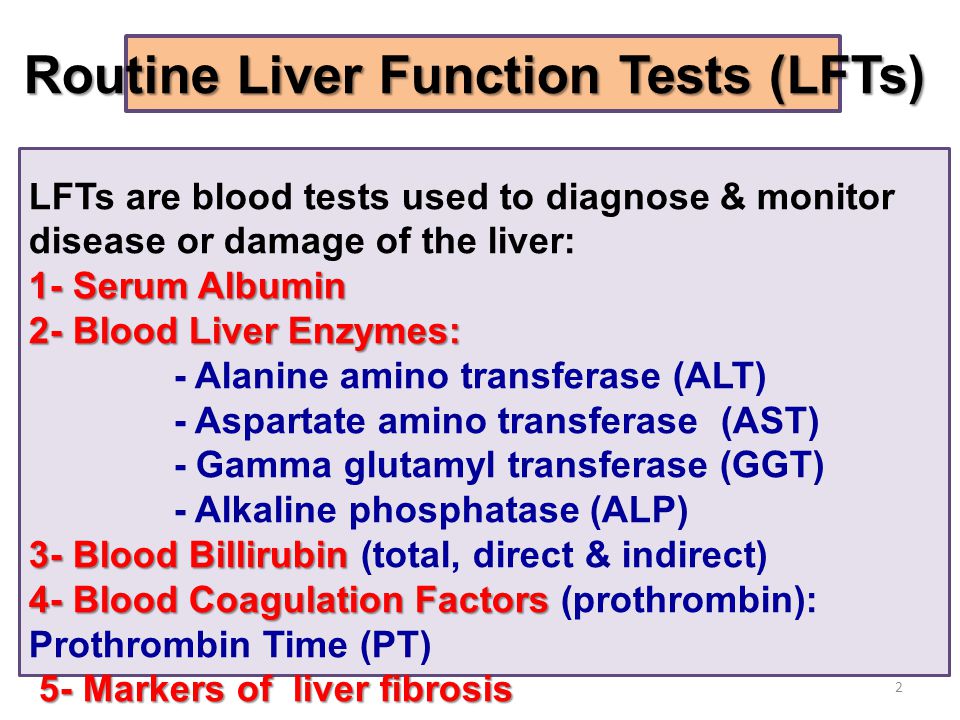
- Vitamin B6 deficiency
- Advanced liver disease or cirrhosis
- Kidney disease
- Certain cancers
- Autoimmune conditions
- Genetic disorders affecting enzyme production
Are low liver enzyme levels always a cause for concern? Not necessarily. In some cases, low levels may simply reflect individual variation or a temporary fluctuation. However, consistently low levels, especially when accompanied by other symptoms, should be evaluated by a healthcare professional.
When to Consider a Liver Enzyme Test
Liver enzyme tests are valuable diagnostic tools, but when should you consider getting one? Healthcare providers may recommend AST and ALT tests in various scenarios:
- As part of routine health screenings, especially for individuals over 45
- For patients with risk factors for liver disease (e.g., obesity, diabetes, family history)
- When symptoms of liver problems are present (e.g., jaundice, fatigue, unexplained weight loss)
- To monitor the progression of known liver conditions
- To assess the effectiveness of liver disease treatments
- Before starting certain medications that may affect liver function
How often should liver enzyme tests be performed? For healthy individuals, a liver enzyme test every 1-2 years as part of routine health checkups is generally sufficient. However, those with known liver conditions or risk factors may require more frequent testing, as determined by their healthcare provider.

The Liver Enzyme Testing Process: What to Expect
Understanding the liver enzyme testing process can help alleviate any anxiety associated with the procedure. What does a typical liver enzyme test involve?
- Preparation: In most cases, no special preparation is required. However, your healthcare provider may ask you to fast for a certain period before the test.
- Blood draw: A healthcare professional will clean the site (usually the inside of your elbow) and insert a small needle to collect a blood sample.
- Sample analysis: The blood sample is sent to a laboratory for analysis.
- Results: Typically, results are available within a few days to a week.
Is the liver enzyme test painful? Most people experience only minimal discomfort during the blood draw, usually described as a brief pinch or sting. Any soreness at the site typically resolves quickly.
Potential Risks and Side Effects
While liver enzyme tests are generally safe, there are some minor risks to be aware of:
- Slight bruising or soreness at the needle insertion site
- Dizziness or fainting (rare, especially if you’re prone to these reactions)
- Infection at the puncture site (extremely rare with proper technique)
Can liver enzyme tests detect all liver problems? While liver enzyme tests are valuable diagnostic tools, they cannot detect all liver conditions. Some liver diseases may not cause significant changes in enzyme levels, especially in their early stages. This is why healthcare providers often use liver enzyme tests in conjunction with other diagnostic methods for a comprehensive evaluation of liver health.

Lifestyle Factors Affecting Liver Enzyme Levels
Various lifestyle factors can influence liver enzyme levels, both positively and negatively. Understanding these factors can help individuals maintain optimal liver health. What lifestyle choices can impact liver enzyme levels?
- Diet: A balanced diet rich in fruits, vegetables, and whole grains supports liver health
- Exercise: Regular physical activity can help maintain healthy liver enzyme levels
- Alcohol consumption: Excessive alcohol intake can elevate liver enzymes
- Weight management: Obesity is linked to nonalcoholic fatty liver disease and elevated enzymes
- Hydration: Adequate water intake supports overall liver function
- Sleep: Poor sleep patterns may affect liver enzyme levels
- Stress management: Chronic stress can impact liver health
How quickly can lifestyle changes affect liver enzyme levels? The impact of lifestyle modifications on liver enzyme levels can vary. Some individuals may see improvements within a few weeks of making positive changes, while others may require several months. Consistency is key when implementing lifestyle changes for liver health.

Dietary Considerations for Liver Health
Certain foods and nutrients are particularly beneficial for liver health:
- Leafy greens (e.g., spinach, kale) rich in antioxidants
- Cruciferous vegetables (e.g., broccoli, Brussels sprouts) containing liver-supporting compounds
- Berries high in antioxidants
- Fatty fish containing omega-3 fatty acids
- Nuts and seeds rich in vitamin E
- Green tea with beneficial catechins
- Turmeric with anti-inflammatory properties
Are there any foods that should be limited for optimal liver health? Yes, certain foods and beverages can potentially stress the liver and should be consumed in moderation:
- Processed foods high in trans fats
- Sugary drinks and excessive added sugars
- Alcohol
- Red and processed meats in large quantities
- Salt, especially for those with liver disease
Complementary Tests for Comprehensive Liver Health Assessment
While AST and ALT tests provide valuable information about liver health, they are often part of a broader panel of tests for a more comprehensive evaluation. What other tests might be included in a liver function assessment?

- Alkaline phosphatase (ALP): An enzyme that can indicate bile duct issues
- Gamma-glutamyl transferase (GGT): Another enzyme that can be elevated in liver disease
- Bilirubin: A breakdown product of red blood cells that can indicate liver function
- Albumin: A protein produced by the liver that can reflect liver synthetic function
- Prothrombin time (PT): A measure of blood clotting that can be affected by liver disease
How do these additional tests complement AST and ALT results? Each of these tests provides unique insights into different aspects of liver function. When interpreted together, they offer a more complete picture of liver health, helping healthcare providers diagnose specific liver conditions or monitor disease progression more accurately.
Imaging Studies for Liver Health
In some cases, healthcare providers may recommend imaging studies to complement blood tests:
- Ultrasound: Non-invasive imaging that can detect fatty liver, cirrhosis, or tumors
- CT scan: Provides detailed images of the liver and surrounding structures
- MRI: Offers high-resolution images and can be particularly useful for detecting certain liver conditions
- Fibroscan: A specialized ultrasound that assesses liver stiffness, indicating fibrosis or cirrhosis
When are imaging studies typically recommended? Imaging studies may be suggested when blood tests indicate potential liver issues, or when a healthcare provider needs more detailed information about liver structure or specific conditions. They can be particularly useful in diagnosing conditions like fatty liver disease or liver tumors that may not always be reflected in blood test results alone.

Future Directions in Liver Health Assessment
The field of liver health assessment is continually evolving, with new technologies and approaches emerging. What are some promising developments in liver health testing?
- Non-invasive biomarkers: Researchers are exploring new blood-based markers that may offer more specific insights into liver health
- Genetic testing: Identifying genetic factors that influence liver disease risk and progression
- Advanced imaging techniques: Development of more sensitive and specific imaging methods for liver assessment
- Artificial intelligence: Using machine learning algorithms to interpret complex liver test results and imaging studies
- Microbiome analysis: Exploring the relationship between gut microbiota and liver health
How might these advancements impact liver health management in the future? These developments could lead to earlier detection of liver diseases, more personalized treatment approaches, and improved monitoring of liver health over time. They may also help identify individuals at higher risk for liver problems, allowing for more targeted prevention strategies.
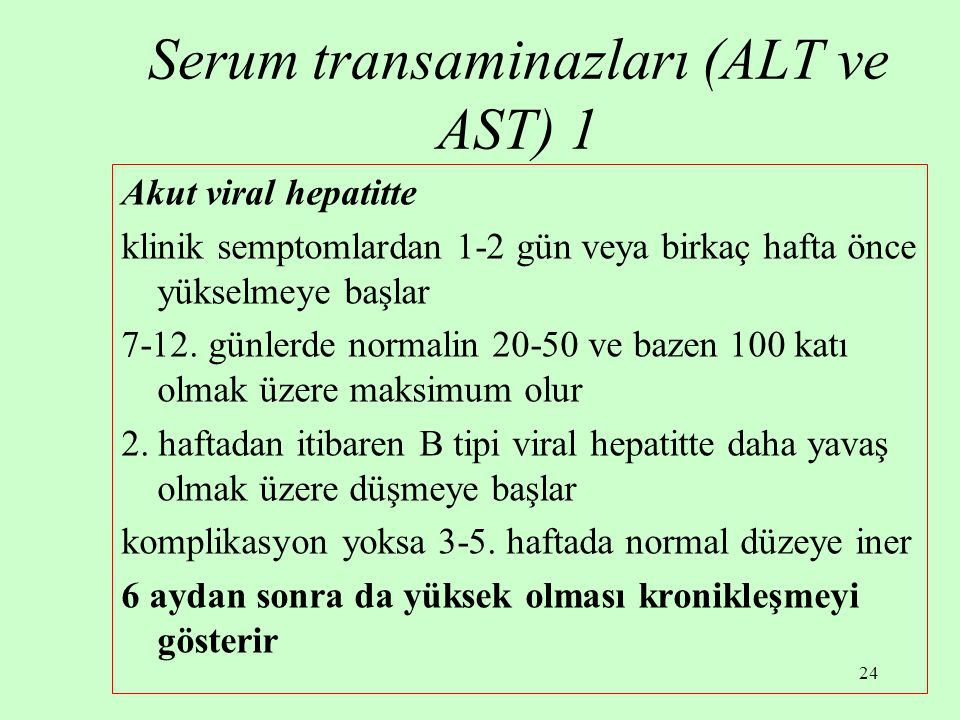
The Role of Personalized Medicine in Liver Health
Personalized medicine is increasingly important in liver health management. This approach takes into account an individual’s genetic makeup, lifestyle factors, and environmental influences to tailor prevention and treatment strategies. How might personalized medicine impact liver enzyme testing and interpretation?
- Customized reference ranges based on individual factors
- Genetic testing to identify liver disease susceptibility
- Tailored lifestyle recommendations based on genetic and metabolic profiles
- Personalized treatment plans for liver conditions
- Predictive models for liver disease progression and treatment response
Can personalized medicine improve outcomes for liver health? While research is ongoing, personalized approaches show promise in enhancing the prevention, diagnosis, and treatment of liver diseases. By considering individual variations, healthcare providers may be able to offer more effective and targeted interventions for optimal liver health.

High and low levels, and what do results mean
An AST blood test measures levels of aspartate aminotransferase (AST) and helps determine liver function. Too much of this enzyme can indicate a problem, such as liver damage.
Aspartate aminotransferase (AST) is an enzyme mostly found in the liver. AST is also present in other parts of the body, including the:
- kidneys
- heart
- muscles
Another name for the AST enzyme is serum glutamic-oxaloacetic transaminase (SGOT).
Most people have low levels of the AST enzyme. Damage to liver cells can cause the release of extra AST into the blood though, leading to higher levels of the enzyme.
After taking a blood test, doctors will classify AST ranges as normal, high, or low. Laboratories may use different testing methods for analyzing samples, so normal ranges can vary between each laboratory.
There is not an exact range for AST levels, as levels can vary among people and still be normal. AST levels can vary depending on factors such as:
AST levels can vary depending on factors such as:
- age
- sex
- weight
- race
The measurements for AST levels are typically in units per liter (U/L) or international units per liter (IU/L). On a test result, the laboratory will usually list their specific reference range.
People will need to look at this reference range and discuss with their doctor what their test results mean for them. To understand the results of an AST blood test, a doctor will also look at other enzymes that can indicate a liver problem.
The following table indicates general AST blood test ranges. However, reference ranges can vary slightly among different laboratories.
| Adults | Children | |
|---|---|---|
| Normal | 10–40 IU/L | |
| High | >36 U/L >1,000 U/L are very high levels and may be a sign of liver injury or hepatitis | >40 IU/L which may be a sign of liver inflammation |
Results from an AST blood test can help indicate liver health.
If AST levels are high, it may also be a sign of:
- chronic hepatitis
- damage from alcohol
- cholestasis, a decrease in bile flow
- heart, kidney, bone, or muscle damage
- liver cancers
- liver scarring, known as liver cirrhosis
Very high AST levels are usually a sign of progressing liver damage, often due to acute hepatitis.
Low AST levels may indicate:
- vitamin B6 deficiency
- kidney disease
- liver disease
- cirrhosis
- cancer
- autoimmune conditions
- genetic conditions
A doctor may also test levels of alanine aminotransferase (ALT), another liver enzyme. ALT levels occur in higher concentrations in the liver.
If ALT levels are normal but AST levels are high, it could indicate a health problem outside of the liver, or it may be a sign of alcohol-induced liver damage.
Having high levels of AST and no other signs of a problem is not necessarily a cause for concern. People with normal liver function can have high AST levels, which may be due to:
People with normal liver function can have high AST levels, which may be due to:
- age
- sex
- race
- certain medications
A person should always discuss any medications or health products they take with a doctor.
Doctors primarily use the AST blood test to check for and assess liver problems, usually alongside other liver tests. The AST protein mainly occurs in the liver and heart. With liver damage, AST can leak from the liver into the bloodstream. When this happens, AST levels in the blood will be higher than normal.
AST also occurs in the brain, heart, kidneys, and muscles. If there is damage in any of these areas, AST levels may also increase.
To rule out issues affecting areas outside the liver, doctors may order a check of the second liver enzyme, ALT, at the same time. If both levels are high, it may indicate a problem with a person’s liver. If only AST levels are high, this may indicate a problem with another organ or system.
People may have an AST test for screening, diagnosis, or monitoring purposes. A doctor may recommend this test if a person:
- has risk factors for liver disease, such as family history, obesity, or diabetes
- has symptoms of a liver problem, such as jaundice, fatigue, or unexplained weight loss
- is undergoing treatment for a liver condition, as an AST blood test can help show how well treatment is working
Alanine aminotransferase (ALT) is an enzyme that mostly occurs in the liver. If there is damage to liver cells, ALT levels in the bloodstream can increase. An ALT test can help indicate liver health, along with other liver enzyme tests.
Healthcare professionals may use both ALT and AST tests to check for the presence of liver enzymes in the blood, as this can give them a clearer idea of overall liver function and health.
Learn more about the ALT test here.
The AST blood test is straightforward and similar to any other blood test. A healthcare professional may take the following steps:
A healthcare professional may take the following steps:
- sit the person down and tie a stretchy band around the upper arm to increase blood flow to that area
- clean the site of the blood draw with an antiseptic wipe
- insert a needle into a vein in the arm to take a blood sample, which may cause people to feel a mild prick or pain
- remove the needle once they have drawn enough blood
- send the blood sample to a laboratory for testing
An AST blood test will usually only take a few minutes in total.
In some cases, people may be able to take an AST test at home. Using an at-home test kit, people will take a blood sample from their fingertip and send the sample to a laboratory. People may receive AST blood test results through the mail, an app, or an online system.
Learn how long it might take to receive blood test results here.
Preparation
People may need to fast for several hours if they are having a combination of liver enzyme tests.
If people are only having an AST blood test, they may not need to fast or prepare in any way.
People will need to let their doctor know if they are taking any medications or supplements, as some may interfere with liver enzyme levels.
As a healthcare professional will be taking blood from the arm, it may be helpful to wear short sleeves during the test.
As with any blood test, an AST blood test has very few risks. It is rare to experience any severe side effects, but people may have some mild bruising or discomfort in the area at the site of the blood draw.
A healthcare professional will place a Band-Aid or bandage on the arm to stop any bleeding.
People may want to have something to eat after the test, particularly if they were fasting beforehand. It is safe for people to drive and continue their usual activities after an AST blood test, unless they experience any unusual symptoms.
A doctor may order tests along with an AST blood test or follow-up tests. This is to help ensure proper diagnosis and determine the best course of treatment. These tests may include:
This is to help ensure proper diagnosis and determine the best course of treatment. These tests may include:
- ALT test: A doctor may order an ALT test alongside an AST test.
- Platelet count: Low platelet levels may indicate HELLP syndrome during pregnancy.
- Coagulation panel: This measures the functioning of clotting-related proteins that the liver produces.
- Complete metabolic panel: This assesses how well the kidneys and liver are working and shows levels of electrolytes.
- Bilirubin test: A bilirubin test checks levels of a byproduct created when the liver breaks down red blood cells.
- Glucose test: High or low blood glucose levels may indicate a liver problem.
- Viral testing: This can help doctors check for hepatitis.
- Imaging: A doctor may order images of the liver via ultrasound.
The extent of follow-up testing will depend on a person’s results.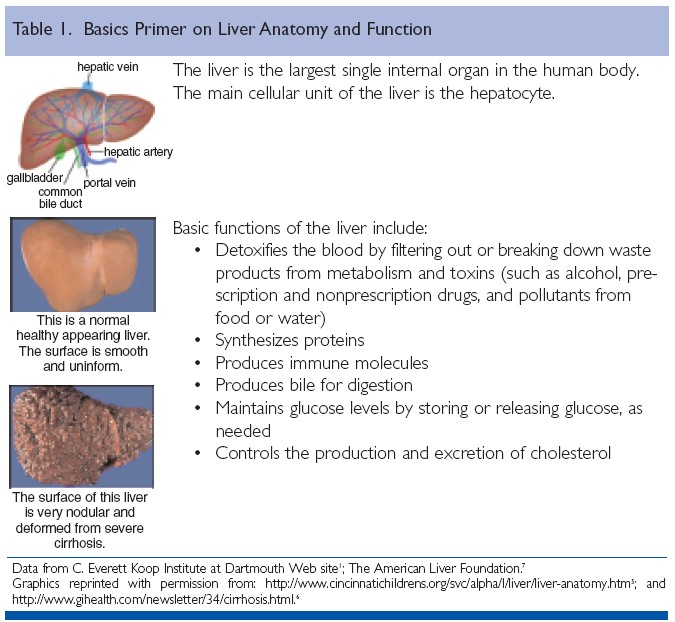 A doctor may also take additional blood tests, imaging tests, or a biopsy to identify or rule out any potential conditions relating to abnormal AST levels.
A doctor may also take additional blood tests, imaging tests, or a biopsy to identify or rule out any potential conditions relating to abnormal AST levels.
Learn about different types of blood tests here.
An AST blood test, or SGOT test, checks how much AST, a liver enzyme, is present in the blood. High levels of AST in the bloodstream could be a sign of liver damage, or cell damage in another organ such as the heart or kidneys.
Doctors may also take additional tests to check other liver enzymes, such as ALT, to get more information on the health of the liver.
Liver Function Tests | Kaiser Permanente
Skip Navigation
Test Overview
Some blood tests are used to determine whether your liver is damaged or inflamed. Although these tests help your doctor evaluate how well your liver is working, they cannot tell if you have hepatitis C.
Tests that assess liver function
Your doctor may do tests to measure certain chemicals produced by the liver.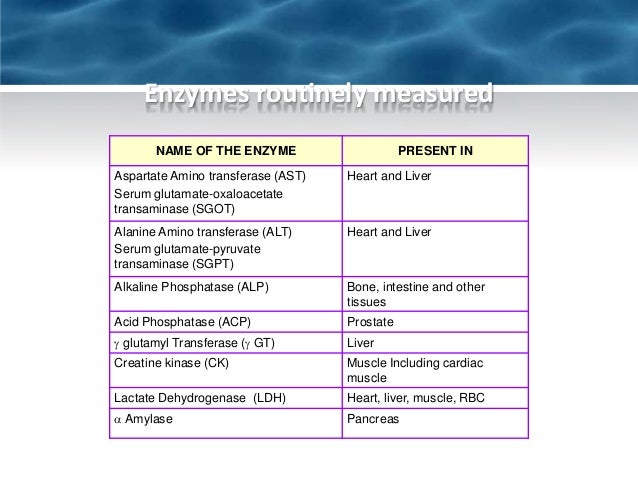 These tests can help your doctor check how well your liver is working.
These tests can help your doctor check how well your liver is working.
Tests may measure:
- Bilirubin.
- Albumin.
- Total serum protein.
Tests that check for inflammation of the liver (liver enzyme studies)
Your liver may be damaged if you have increased levels of:
- Alanine aminotransferase (ALT or SGPT).
- Aspartate aminotransferase (AST or SGOT).
An increased level of alkaline phosphatase (AP) may indicate blockage of bile ducts.
Why It Is Done
Liver tests are done when a medical history or physical exam suggests that something may be wrong with your liver.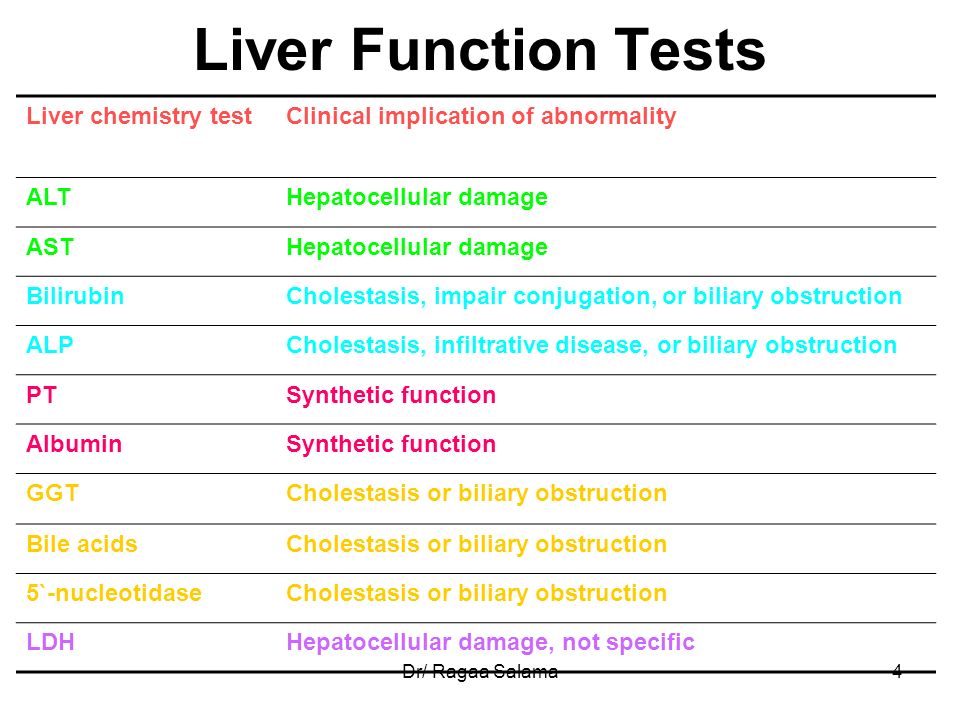
These tests can also help diagnose long-term (chronic) infection. If liver enzymes are high, a test for hepatitis C antibodies may be done to see if you have hepatitis C.
If you are being treated with antiviral therapy, you may have liver tests from time to time to see whether treatment is working.
How To Prepare
In general, there’s nothing you have to do before this test, unless your doctor tells you to.
How It Is Done
A health professional uses a needle to take a blood sample, usually from the arm.
Results
Normal
All levels are within the normal range.
Abnormal
One or more levels are outside the normal range. Abnormal liver function tests may mean that your liver is inflamed or is not working normally. This can be a sign that you have a viral infection.
Credits
- Top of the page
Next Section:
Why It Is Done
Gamma-glutamyltransferase (GGT) – indications, norm, blood test
EN / ENG / UA
The enzyme was first described by Hanes et al. in 1952 GGT – microsomal enzyme involved in amino acid metabolism. Catalyzes the transfer of ?-glutamyl residue from ?-glutamyl peptide to an amino acid or peptide (external transpeptidation), as well as to another substrate molecule (internal transpeptidation). Normally, the specific activity of the enzyme is higher than in blood serum, 7000-7500 times in the kidneys, 600-650 times in the pancreas, 200-500 times in the liver.
Insignificant activity of the enzyme is also recorded in the spleen, intestines, brain, lungs, skeletal muscles, heart, prostate. The enzyme is found in lysosomes, membranes, and cytoplasm of the cell, and membrane localization of GGT is characteristic of cells with high secretory, excretory, or reabsorption capacity. In the blood plasma of newborns, the activity of gamma-glutamyltransferase is 8-10 times higher than in adults, and even more in preterm infants.
During 7-9 months of life, GGT activity in the blood decreases, remaining constant until puberty. The level of the enzyme is also influenced by gender differences. In adolescents from 13 to 17 years old and in adults, the reference values of gamma-glutamyl transpeptidase activity for women are 20-25% lower than for men.
Diagnosis of gamma-glutamyltransferase
Determination of GGT activity in blood serum has become of great importance for the diagnosis of diseases of the liver and hepatobiliary tract, and an increase in serum GGT values is a sensitive indicator in diseases of the hepatobiliary system (marker of cholestasis)
Serum GGT levels increase in all forms of liver disease. The highest activity of the enzyme in cases of obstructive liver damage (5-30 times higher than normal values). This is a more sensitive indicator of liver pathology than ALT and AST in the diagnosis of obstructive jaundice, cholangitis and cholecystitis. The increase in GGT in these cases is observed earlier and lasts longer than other liver enzymes. The activity of gamma-glutamyl tranpeptidases in infectious hepatitis is 2–5 times higher than normal (in these cases, the determination of GGT is less useful than ALT and AST). In almost 100% of cases in cancer patients with liver metastases (without jaundice and with jaundice), a very significant increase in enzyme activity (12 or more times higher than normal) was found. Moreover, changes in activity gamma-glutamyltransferases are observed earlier and are more pronounced than the activities of other enzymes. A slight increase in GGT (2-5 times) is observed in patients with fatty degeneration of the liver.
The highest activity of the enzyme in cases of obstructive liver damage (5-30 times higher than normal values). This is a more sensitive indicator of liver pathology than ALT and AST in the diagnosis of obstructive jaundice, cholangitis and cholecystitis. The increase in GGT in these cases is observed earlier and lasts longer than other liver enzymes. The activity of gamma-glutamyl tranpeptidases in infectious hepatitis is 2–5 times higher than normal (in these cases, the determination of GGT is less useful than ALT and AST). In almost 100% of cases in cancer patients with liver metastases (without jaundice and with jaundice), a very significant increase in enzyme activity (12 or more times higher than normal) was found. Moreover, changes in activity gamma-glutamyltransferases are observed earlier and are more pronounced than the activities of other enzymes. A slight increase in GGT (2-5 times) is observed in patients with fatty degeneration of the liver.
An increase in enzyme activity is caused by many substances, especially drugs that can induce microsomal oxidizing capacity, as well as any oxidative stress (including diabetic ketoacidosis). After stopping the administration of drugs, GGT activity gradually returns to normal. In patients suffering from acute or chronic pancreatitis, malignant diseases of the pancreas, GGT activity, as a rule, exceeds the norm by 5–15 times.
After stopping the administration of drugs, GGT activity gradually returns to normal. In patients suffering from acute or chronic pancreatitis, malignant diseases of the pancreas, GGT activity, as a rule, exceeds the norm by 5–15 times.
High GGT activity was noted in the blood of alcoholics. There are certain differences between the activity of GGT in the blood of alcoholics and people who have taken a significant dose of alcohol (in the latter, even after severe intoxication, an increase in activity is observed only for 12 hours and does not exceed 15% of the norm). Therefore, gamma-glutamyltransferase is used to monitor the effectiveness of the treatment of patients with alcoholism. The high specific activity of GGT in the prostate gland, so it can be used as a marker of malignant diseases of the prostate gland. The study of GGT activity in brain lesions has acquired great clinical and diagnostic significance.
Parallel determination of the activity of GGT and alkaline phosphatase (in cases of its increased activity) helps when it is necessary to decide whether their source is an altered bone metabolism or the presence of hepatobiliary disorders, because. in conditions in which alkaline phosphatase is elevated (in healthy pregnant women, in children older than 1 year, in cases of bone diseases), GGT is within normal limits.
in conditions in which alkaline phosphatase is elevated (in healthy pregnant women, in children older than 1 year, in cases of bone diseases), GGT is within normal limits.
Indications for Gamma-glutamyltransferase test
- Diagnosis and differential diagnosis of liver lesions
- Monitoring of the course of pancreatic, prostate, hepatoma cancer
- Screening for alcoholism, monitoring the treatment of people with chronic alcoholism
- Evaluation of hepatotoxicity of drugs
Examination
Examination preparation: fasting blood sampling
Examination material: blood serum, avoid hemolysis
Method of determination : kinetic (IFCC)
Units of measure : U/l
Reference values (normal gamma-glutamyltransferase in blood)
| Age and sex 9 0075 | Norm of gamma – glutamyltransferesis |
|---|---|
| up to 6 months | < 204 U/l |
| 7-12 months | < 34 U/l |
| 1-3 years | < 18 U/l |
| 4-6 years | < 23 U/l |
| 7-12 years old | < 17 U/l |
| men 13-17 years old | < 45 U/l |
| women 13-17 years old | < 33 U/l |
| men > 17 years old | < 55 U/l |
| women > 17 years old | < 38 U/l |
Increased gamma-glutamyl transpeptidase values
If you have high GGT, possible reasons for this may be:
- Intra- and extrahepatic cholestasis
- Acute viral hepatitis, toxic, radiation damage to the liver
- Chronic hepatitis
- Acute and chronic pancreatitis
- Alcohol-induced liver injury
- Infectious mononucleosis
- Hyperthyroidism
- Myotonic dystrophy
- Diabetes mellitus
- Kidney pathology (exacerbations of chronic glomerulo- and pyelonephritis)
- Cancer of the pancreas, prostate, hepatoma
- Taking medications (barbiturates, phenytoin, rifampicin, cephalosporins, estrogens, oral contraceptives, acetaminophen)
The cost of a blood test for the content of gamma-glutamyl transferase
A blood test for the content of gamma-glutamyl transferase costs 35 UAH. It is carried out within 1-2 days. The cost of taking material for research is paid separately (15 – 25 UAH).
It is carried out within 1-2 days. The cost of taking material for research is paid separately (15 – 25 UAH).
You can get full information about the service from our laboratory assistant.
Medical equipment of our laboratory.
Consultation of a laboratory doctor
Reviews
Currently I am a resident of the Crimea, I learned about the unique methods of treatment in the Clinic, I came here with problematic… !
I came to the CDC with joint pain, pronounced varicose veins, complaints about the work of the stomach.
After…
It so happened that I was already falling off my feet. I had problems with the thyroid gland, my bones hurt a lot,…
I’ve been sick for a long time. The joints are very sore, the thyroid gland is worried. The joints hurt both under load and in the state…
I have worked as a teacher at the Medical Academy for 35 years, I have been suffering from rheumatoid arthritis for more than 10 years.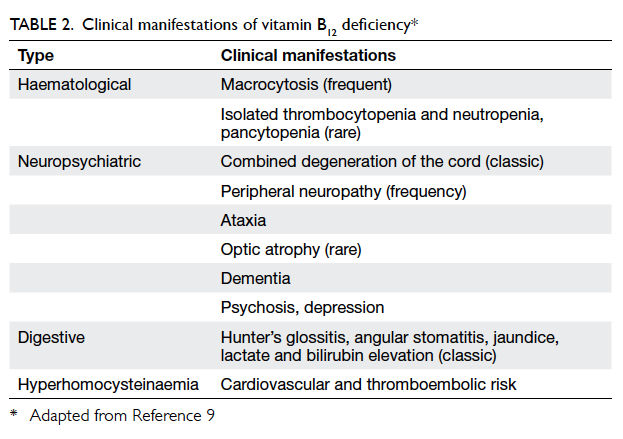 …
…
I ended up in a clinic with problems of the pancreas. Having passed the diagnostics and the course of treatment, I was satisfied and …
I want to express my heartfelt gratitude to Yuri Nikolaevich Kulikovich for the creation of such a clinic, for the good …
We have come from far away, and we are very touched by the care and attention that surrounded us in the Clinic. Thank you very much…
Complaints about the musculoskeletal system forced me to go to the clinic, my knees and hips hurt… gratitude to the whole team of the Kulikovich Clinic for the assistance rendered to me in the treatment, in…
The first thing that impressed me was the fashionableness, but this is a shell. The most important thing is that during the treatment I…
I am very grateful to the people who work here for the kindness and warmth that they radiate, for the attitude that…
17 years of work experience. I work in the Central District Hospital of Verkhnedneprovsk. Until now, in private…
Until now, in private…
I would like to express my sincere gratitude for the sensitive attitude and professional treatment of everything…
Thank you from the bottom of my heart, Dr. Kulikovich Yu.N., for the creation of a modern center of domestic medicine… .
I express my deep gratitude to Comrade Yury Nikolayevich Kulikovich and the medical staff for their sensitivity and constant… pain in the lower back and between the shoulder blades. For 8 treatment sessions, pain …
I express my gratitude to Dr. Yury Nikolayevich Kulikovich and his medical staff, doctors and nurses for …
All reviews
Site search
Next image |
what are the standards and what does the deviation mean?
Contents
- 1 Normal ALT and AST values in women: how to assess your liver
- 1.
 1 ALT and AST – what is it?
1 ALT and AST – what is it? - 1.2 Related videos:
- 1.3 Blood test for ALT and AST
- 1.4 Normal ALT and AST in women
- 1.5 Abnormal ALT and AST from the norm
- 1.6 Reasons for increasing the level of ALT and AST in women
- 1.7 Diseases, causing elevated levels of ALT and AST in women
- 1.7.1 Hepatitis
- 1.7.2 Cirrhosis of the liver
- 1.7.3 Obesity
- 1.7.4 Other diseases
- 1.8 Symptoms of elevated ALT and AST levels in women
- 1.9 Diagnosing elevated ALT and AST
- 1.10 How to deal with elevated ALT and AST
- 1.11 Treating elevated ALT and AST
- 1.12 Nutrition for elevated ALT and AST
- 900 42 1.12.1 Introduction
- 1.12.2 What to Eat
- 1.12.3 What to Avoid
- 1.12.4 Cooking Tips
- 1.12.5 Conclusion
- 1.
- 1.13 ALT and AST Prevention
- 1.14 Sequelae of elevated ALT and AST levels
- 1.
 15 Comparison with elevated levels of other blood parameters
15 Comparison with elevated levels of other blood parameters - 1.16 ALT and AST testing for hepatitis
- 1.16.1 Alanine aminotransferase and Aspartate aminotransferase
900 42 1.16.2 How to prepare for ALT and AST
- 1.16.3 What the test results mean
testing
- 1.19.0.1 What are Alt and Ast and why are these indicators needed in the analyzes of women?
- 1.19.0.2 What are the normal levels of Alt and Ast in women?
- 1.19.0.3 What can cause an increase in Alt in women?
- 1.19.0.4 What causes an increase in the Ast level in women?
- 1.19.0.5 What does low Alt mean in women?
- 1.19.0.6 What can it mean if the level of Alt and Ast is simultaneously elevated in women?
- 1.19.0.7 Can a low Ast level in women indicate the absence of liver problems?
- 1.
 19.0.8 How long do elevated levels of Alt and Ast persist in women after drinking alcohol?
19.0.8 How long do elevated levels of Alt and Ast persist in women after drinking alcohol?
Find out which ALT and AST values are normal for women. Useful information about the functions of these indicators and the causes of deviations from the norm.
Alt and Ast are enzymes that are responsible for the functioning of the liver. If their blood levels are elevated, this may indicate a liver problem. A blood test for alt and ast is usually ordered in case of suspected liver disease, but what does a deviation in the level of these enzymes mean in women?
ALT and AST blood levels in women depend on many factors, including age, sex, disease, and medication. But in general, the alt level in women should not exceed 31 units/l, and the ast level should not exceed 34 units/l.
Abnormal alt and ast levels in women may indicate liver problems such as hepatitis, cirrhosis, tumors, and gallstones. However, keep in mind that elevated levels of alt and ast are not always indicative of liver disease.
Some medications, such as aspirin, pain pills, and antibiotics, can increase blood levels of these enzymes.
If you have been tested for alt and ast and your blood levels of these enzymes are elevated, be sure to discuss the results with your doctor. He will be able to assess your ALT and AST levels in the context of your health and determine if additional testing or treatment is needed.
ALT and AST – what is it?
Alanine aminotransferase (ALT) and aspartate aminotransferase (AST) are enzymes found inside liver cells. If liver cells are damaged or destroyed, these enzymes enter the bloodstream. Therefore, an increase in the level of ALT and AST in the blood may indicate the presence of problems with the liver or other organs.
ALT is predominantly present in liver cells, but can also be found in heart cells and other tissues. AST is present in the cells of the liver, heart, muscles and other organs.
ALT and AST are often used together in the diagnosis of liver diseases such as hepatitis and cirrhosis. These enzymes can also be elevated in myocardial infarction, rheumatic diseases, and other problems.
These enzymes can also be elevated in myocardial infarction, rheumatic diseases, and other problems.
Related videos:
ALT and AST blood test
The blood test for ALT (alianine aminotransferase) and AST (aspartate aminotransferase) is one of the most common methods for diagnosing diseases of the liver and heart. Both are enzymes that are normally found inside the cells of the liver and heart, but if these organs become damaged or inflamed, ALT and AST are released from the cells into the blood, causing their blood levels to rise.
ALT is commonly screened to diagnose liver diseases such as hepatitis, cirrhosis, and liver cancer. ALT levels can also be elevated with certain medications, jaundice, gallbladder disease, and inflammatory diseases of the biliary tract.
AST, on the other hand, can be elevated in a number of conditions, including heart disease, myocardial infarction, liver disease, and muscle disease. AST levels can also be elevated when taking certain medications.
Elevated levels of ALT and AST in the blood may indicate a specific disease, but these indicators cannot indicate a specific condition. To detect the disease, additional research and examinations are necessary.
In general, elevated levels of ALT and AST usually indicate damage to some organs in the body. If you are found to have elevated levels of ALT or AST, you should undergo further tests to find out which organs are damaged and begin treatment under the guidance of a qualified physician.
Yes
100%
Normal ALT and AST in women
Alanine aminotransferase (ALT) and aspartate aminotransferase (AST) are indicators of liver function. Normal blood levels of these enzymes may vary depending on the methodology of the laboratory, as well as the age, sex, and weight of the patient.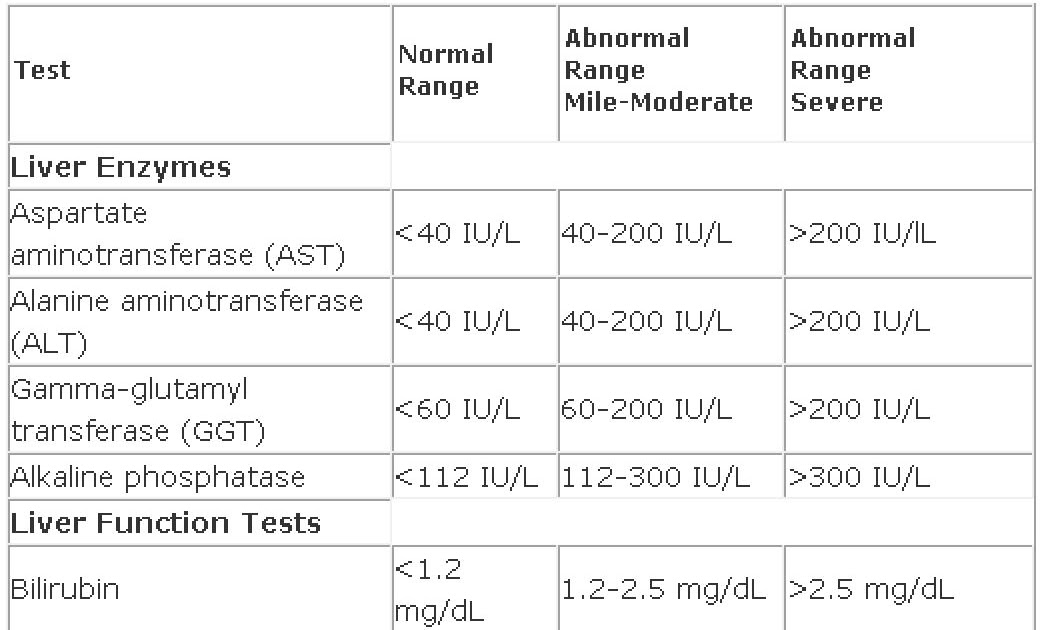 However, on average, in women, ALT and AST have the following norms:
However, on average, in women, ALT and AST have the following norms:
- ALT: up to 34 units/l;
- AST: up to 31 U/L.
If a woman’s ALT and AST levels are higher than normal, this may indicate liver problems such as inflammation, fatty degeneration, or cirrhosis. However, another underlying cause may also be present, such as alcohol or drug poisoning, drug injection, or heart or muscle disease.
If you have been prescribed ALT and AST tests and find that these levels are abnormal, you should consult your doctor to determine the cause and prescribe the appropriate treatment.
ALT and AST abnormal
Alanine aminotransferase (ALT) and aspartate aminotransferase (AST) are enzymes that help the body make proteins. Normal levels of ALT and AST in women can vary, but are usually in the range of 7-56 units/L for ALT and 10-40 units/L for AST.
Abnormal levels of ALT and AST may indicate the presence of liver disease such as hepatitis or cirrhosis. If the level remains elevated for a long time, it can lead to serious complications, including liver failure or liver cancer.
If the level remains elevated for a long time, it can lead to serious complications, including liver failure or liver cancer.
ALT and AST levels may also be elevated in other conditions such as myocardial infarction, pneumonia, or myopathies. This can help diagnose these conditions and track their treatment.
If the levels of ALT and AST strongly deviate from the norm, it is recommended to consult a doctor for additional examination and determination of the cause of such deviation. Early detection and treatment of diseases that can lead to elevated levels of ALT and AST can help maintain health and prevent serious complications.
Causes of increased levels of ALT and AST in women
AST (aspartate aminotransferase) and ALT (alanine aminotransferase) are enzymes that are involved in the process of amino acid metabolism. They are found in the cells of the liver, heart muscle, kidneys and other tissues of the body. If the level of ALT and AST is elevated in a woman, this may indicate the presence of the following reasons:
- Liver diseases: elevated levels of ALT and AST may indicate the presence of hepatitis, liver cirrhosis, fatty degeneration and other pathological changes.
 At the same time, ALT levels may rise earlier than AST.
At the same time, ALT levels may rise earlier than AST. - Taking medications: Many medications can increase blood levels of ALT and AST. This is especially true of hepatotoxic drugs that have a negative effect on the liver.
- Alcoholic liver disease: The presence of an alcoholic mixture may lead to elevated levels of ALT and AST.
- Myocarditis, cardiac muscle hypoxia: If the heart muscle is affected, AST levels can rise much faster than ALT.
- Non-specific elevation: ALT and AST levels may be elevated with various infectious diseases, trauma and surgery.
In any case, if the level of ALT and AST in a woman is elevated, this requires a mandatory examination and identification of the cause in order to prescribe an effective treatment.
Diseases that cause elevated levels of ALT and AST in women
Hepatitis
Elevated levels of ALT and AST may be associated with hepatitis, an inflammation of the liver that can be caused by viruses, alcohol, drugs, and other factors. In hepatitis, ALT and AST are higher than normal due to damage to liver cells and the release of enzymes into the blood.
In hepatitis, ALT and AST are higher than normal due to damage to liver cells and the release of enzymes into the blood.
Cirrhosis of the liver
Cirrhosis of the liver is characterized by the gradual accumulation of damage to the liver cells, which can cause an increase in the level of ALT and AST. With cirrhosis of the liver, the function of the organ is impaired, which can lead to serious consequences.
Obesity
Obesity can be one of the causes of elevated levels of ALT and AST. Fat accumulates in the liver, which can cause it to malfunction and release enzymes into the blood.
Other diseases
Elevated levels of ALT and AST may also be associated with rarer diseases such as myopathy, muscle wasting, thrombosis, myocardial infarction and others. You need to see a doctor for an accurate diagnosis and treatment.
Symptoms of elevated ALT and AST levels in women
ALT (alanine aminotransferase) and AST (aspartate aminotransferase) are enzymes that are found inside the cells of the liver and other organs. Elevated levels of ALT and AST in the blood can indicate problems with the liver, heart, muscles, and other organs.
Elevated levels of ALT and AST in the blood can indicate problems with the liver, heart, muscles, and other organs.
In women, elevated levels of ALT and AST may present with the following symptoms:0043
If If you notice any of these symptoms, you should see a doctor for diagnosis and treatment. He may order blood tests for ALT and AST levels, as well as other types of tests to identify possible problems with the body.
Do not ignore the symptoms of elevated levels of ALT and AST, as these enzymes can indicate serious diseases that require competent medical attention.
Diagnosis of elevated levels of ALT and AST
A special blood test is performed to determine the level of hormones ALT and AST. This test can help diagnose various diseases of the liver, heart, and muscles.
This test can help diagnose various diseases of the liver, heart, and muscles.
ALT and AST levels may be elevated in the presence of viral hepatitis, alcoholic or toxic hepatitis, cirrhosis of the liver, infectious mononucleosis, heart and muscle disease. In some cases, an increase in hormone levels may be due to medications taken or tissue damage resulting from an injury.
If the ALT and AST levels are above normal, further investigations are needed to determine the cause of the deviation. Do not panic in advance, because elevated hormone levels do not always indicate a serious illness.
It is important to understand that self-monitoring of ALT and AST levels at home is not sufficient to establish a diagnosis. To do this, you should consult a doctor and perform the recommended tests.
What to do with elevated levels of ALT and AST
If you have been diagnosed with elevated levels of ALT and AST in the blood, do not panic, but do not ignore this fact either. First you need to determine the reason for such a deviation. Usually, elevated levels of ALT and AST indicate complications in the liver.
First you need to determine the reason for such a deviation. Usually, elevated levels of ALT and AST indicate complications in the liver.
If elevated ALT and AST levels are caused by a disease or infection, your doctor may prescribe appropriate treatment to address the cause of the increase.
However, sometimes elevated levels of ALT and AST may indicate the presence of chronic diseases of the liver or other organs. In this case, it is necessary to undergo an examination to determine the causes of this condition and prescribe a suitable treatment.
To lower your ALT and AST levels, you need to follow a proper diet, stop bad habits, take the right medications, and have regular medical checkups.
In any case, ALT and AST levels should be monitored regularly. If you find deviations from the norm, you should consult a doctor in a timely manner and undergo an additional examination to find out the causes and prevent possible complications.
Treatment of elevated ALT and AST
As markers of liver damage, ALT and AST are important indicators of liver disease. If ALT and AST levels are high, treatment depends on the underlying cause of the condition.
If ALT and AST levels are high, treatment depends on the underlying cause of the condition.
If elevated levels of ALT and AST are due to alcoholic or viral hepatitis, then the main treatment is the treatment of the underlying disease. In cases of liver failure, increased protein intake and dietary elasticity may be prescribed.
If elevated levels of ALT and AST are associated with medication or supplements, then these drugs should be discontinued. You may have to replace them with safer alternatives.
For people with elevated levels of ALT and AST, it is imperative to control alcohol consumption and the abuse of fatty, rich foods.
Based on the above, you need to understand that elevated levels of ALT and AST require careful consideration and analysis of the causes. Only then can you find the appropriate treatment and make the necessary adjustments in your lifestyle and diet.
Nutrition with elevated ALT and AST levels
Introduction
Women with elevated ALT and AST levels should pay attention to their diet. Diet can have a big impact on the levels of these enzymes in the blood, so it is recommended to follow certain rules when compiling your daily menu.
Diet can have a big impact on the levels of these enzymes in the blood, so it is recommended to follow certain rules when compiling your daily menu.
What to eat
With elevated ALT and AST levels, a healthy diet is given special attention. Women should eat more fresh fruits and vegetables, as well as protein foods such as fish, chicken, eggs, and cottage cheese. It is also recommended to drink plenty of fluids, including clean water.
What to avoid
Women should limit their intake of fatty and fried foods, as well as sweets and alcohol, to avoid elevated ALT and AST levels. In addition, it is recommended to avoid too much coffee and strong tea.
Cooking tips
One way to preserve the health benefits of food is to cook it properly. Women should prefer steamed or grilled dishes. Also, if possible, it is necessary to exclude frying in oil and give preference to cold appetizers and salads.
Conclusion
By following simple healthy dietary guidelines, women can lower their blood levels of ALT and AST. Regular consumption of fresh fruits and vegetables, protein foods, limiting fatty, fried and sugary foods, and proper cooking will help maintain a healthy liver and improve overall body health.
Regular consumption of fresh fruits and vegetables, protein foods, limiting fatty, fried and sugary foods, and proper cooking will help maintain a healthy liver and improve overall body health.
Preventing elevated ALT and AST levels
Maintaining a healthy liver and preventing elevated ALT and AST levels in women requires a healthy lifestyle:
- Avoid alcohol and nicotine;
- Watch your diet and avoid fatty, fried and salty foods;
- Maintain a healthy weight and avoid excess weight;
- Exercise regularly;
- Avoid stress and nervous overload;
- Monitor the level of hormones in the body, especially when taking hormonal drugs.
It is also recommended to undergo regular medical examinations and seek medical attention at the first symptoms of liver disease: pain in the right hypochondrium, nausea, vomiting, jaundice, loss of appetite and drowsiness.
If the level of ALT and AST in the blood of a woman is elevated, then it is necessary to consult a doctor for additional examination and determination of the cause of the deviation.
Sample diet to prevent elevated ALT and ASTV Time Meal
| 8:00 | Breakfast: oatmeal with water, apple, green tea |
| 11: 00 | Snack: fruit yogurt, nuts |
| 2:00 pm | Lunch: grilled chicken breast, steamed vegetables, slice of rye bread, water |
| 20:00 | Dinner: steamed fish, vegetable salad, slice of rye bread, water |
ALT and AST levels
Elevated levels of ALT and AST usually indicate liver dysfunction. Such violations can be caused by various reasons: from alcohol or drug intoxication to viral infections or cancer.
One of the first signs of elevated levels of ALT and AST are yellowing eyes and skin, which indicate a violation of the outflow of bile. Other signs may include pain in the right side, bloating, nausea, vomiting, and general weakness.
These signs should not be ignored, as elevated levels of ALT and AST can lead to serious consequences. For example, it can cause cirrhosis of the liver, which in turn can lead to liver cancer and other dangerous diseases. Therefore, if suspicious symptoms appear, you should consult a doctor and undergo an appropriate examination.
For example, it can cause cirrhosis of the liver, which in turn can lead to liver cancer and other dangerous diseases. Therefore, if suspicious symptoms appear, you should consult a doctor and undergo an appropriate examination.
- Suspected or developing acute hepatitis
- Confirmed chronic hepatitis
- Suspected gallbladder disease
- May be caused by certain drugs or high alcohol intake
If found elevated high levels of ALT and AST, measures must be taken to eliminate the cause of its occurrence. For this, special medications, diet, avoidance of alcohol and other suitable measures can be prescribed.
Comparison with elevated levels of other blood parameters
The presence of elevated levels of alanine aminotransferase (Alt) and aspartate aminotransferase (AST) can be caused not only by diseases of the liver, cardiovascular system and muscle tissue, but also by the presence of other indicators in the blood, such as iron, glucose, cholesterol and others.
When comparing the levels of Alt and Ast with other indicators, it is necessary to take into account the possible mechanisms for increasing the levels of these enzymes. For example, an increase in the level of Alt and Ast may be associated with a violation of iron metabolism in the body, which leads to its accumulation in the liver and intensive destruction of liver cells.
However, in the presence of elevated levels of Alt and Ast in combination with other indicators, it is necessary to conduct an additional examination to determine the cause of the increase and further treatment.
- Elevated blood glucose may indicate diabetes.
- Elevated cholesterol levels may be associated with impaired lipid metabolism in the body.
- Elevated iron levels may indicate the presence of hemochromatosis.
ALT and AST hepatitis test
Alanine aminotransferase and Aspartate aminotransferase
ALT and AST are enzymes that are found inside liver cells. They are involved in the metabolism of amino acids and help the body get energy from food. High levels of ALT and AST can indicate liver problems, which is why they are usually included in a standard CBC.
They are involved in the metabolism of amino acids and help the body get energy from food. High levels of ALT and AST can indicate liver problems, which is why they are usually included in a standard CBC.
One of the most common blood tests for ALT and AST levels is a hepatitis test. Hepatitis is an inflammatory disease of the liver that can be caused by infection, alcohol, or toxins. ALT and AST may be elevated in viral hepatitis, and their rise may reflect the degree of liver damage.
How to prepare for an ALT and AST test
To prepare for an ALT and AST test, you must give blood samples. No other special preparatory measures are required. However, alcohol consumption should be limited prior to testing, as it can increase blood levels of ALT and AST.
What the test results mean
The normal range for ALT and AST blood levels may vary depending on the laboratory that performs the test. Generally, ALT and AST levels should not exceed 30 to 40 units per liter (U/L) in women.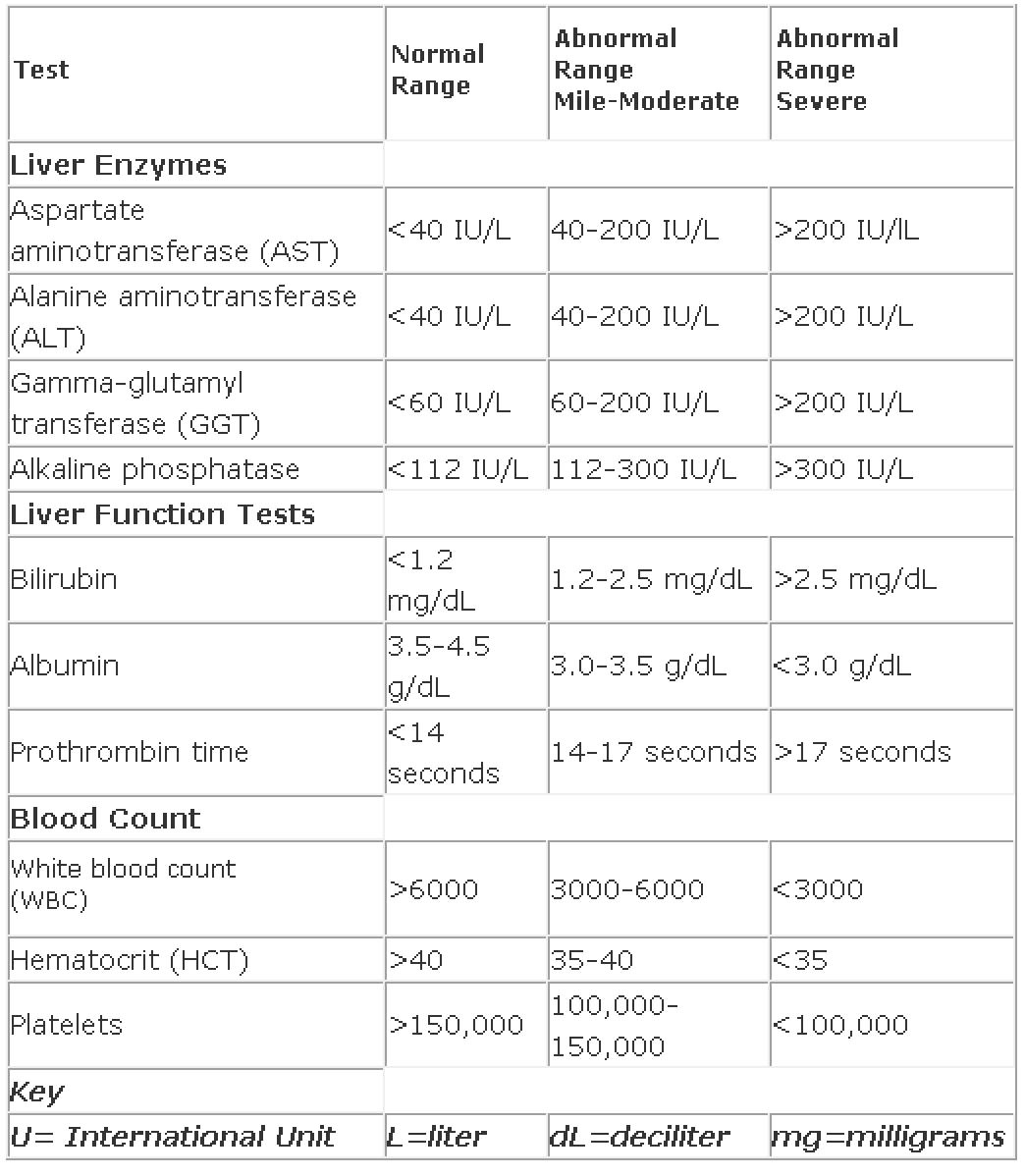 If the level of ALT and AST is elevated, then this may indicate a toxic or infectious liver lesion.
If the level of ALT and AST is elevated, then this may indicate a toxic or infectious liver lesion.
If the results of the analysis show high levels of ALT and AST, then it is necessary to consult with the attending physician to identify the possible cause of the elevated ALT and AST levels and begin treatment.
The effect of ALT and AST on pregnancy
ALT and AST are indicators that can be measured in the blood of a pregnant woman at different stages of pregnancy. They play an important role in assessing the health of the liver, but can also indicate problems with the heart and muscles.
Studies show that elevated levels of ALT and AST in the blood of a pregnant woman can indicate the presence of infection, hepatitis, many other diseases, and also negatively affect the development of the child.
Although elevated levels of ALT and AST alone are not dangerous for pregnancy, if both levels are elevated, action must be taken. In this case, the woman should consult a doctor and undergo additional examinations.
In addition, maintaining a healthy lifestyle and proper diet can help reduce the risk of elevated ALT and AST levels. Pregnant women need to pay special attention to their health and monitor the level of these indicators in the blood in order to ensure the health of their child and themselves in general.
When to see a doctor if ALT and AST levels are elevated
If the levels of alanine aminotransferase (ALT) and aspartate aminotransferase (AST) in a woman’s blood are elevated, this may be a symptom of various diseases of the liver, cardiovascular system and other organs.
If a woman notices symptoms such as fatigue, nausea, jaundice, right upper quadrant tenderness, she should seek immediate medical attention.
It is also recommended that women undergo regular medical examinations in order to identify possible problems of the disease at an early stage.
To diagnose the level of ALT and AST, it is necessary to donate blood for a biochemical analysis, which can determine the presence of pathological changes.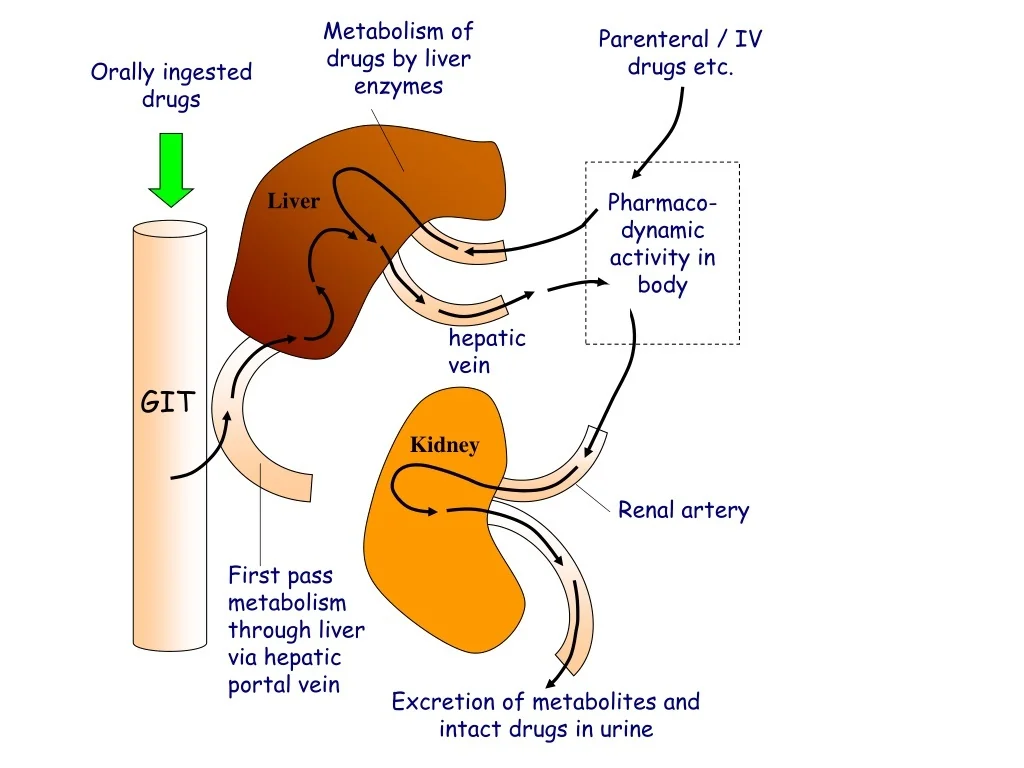
If ALT and AST levels are elevated, the doctor may order additional tests to determine the cause of the abnormality and prescribe appropriate treatment.
Question-answer:
What are Alt and Ast and why are these indicators needed in the analyzes of women?
Alt (alanine aminotransferase) and Ast (aspartate aminotransferase) are enzymes that are found in liver cells and are involved in amino acid metabolism. Their blood levels help diagnose liver disease and assess liver function. When deviating from the norm, Alt and Ast can indicate various pathologies that need to be identified and treated.
What are the normal levels of Alt and Ast in women?
The norm of Alt in women is 10-40 U/l, and the norm of Ast is 10-30 U/l. However, these values may differ depending on the laboratory that performs the analysis. Therefore, when studying the results, it is necessary to be guided by the standards specified in the laboratory where the analyzes were carried out.
What can cause an increase in Alt in women?
An increase in the level of Alt in the blood in women can be caused by diseases such as viral hepatitis, cirrhosis of the liver, fatty liver, as well as the use of alcohol or toxic drugs. Also, an increase in Alt levels may be associated with muscle damage, along with damage to liver cells.
What causes an increase in Asth levels in women?
An increase in the level of Ast in the blood in women can be caused by liver pathologies (cirrhosis, hepatitis), myocardial infarction, encephalopathy, jaundice. Also, an increase in the level of Ast can be observed in oncological diseases, alcoholism and the use of toxic drugs.
What does low Alt mean in women?
Decrease in the level of Alt in the blood is not a pathology and in itself does not cause any symptoms. However, if the Alt level is reduced, but the Ast level remains normal, then this may indicate a violation of liver function and require further examination and diagnosis.
What can it mean if the level of Alt and Ast is simultaneously elevated in women?
Simultaneous elevation of Alt and Ast may indicate various liver diseases such as hepatitis, cirrhosis or cancer. Also, an increase in the level of Alt and Ast may be associated with dysfunction of other organs, such as skin, muscles and pancreas. The final diagnosis can only be made after a comprehensive examination and exclusion of other pathologies.
Can a low level of Ast in women indicate the absence of problems with the liver?
No, low Ast levels in the blood are not a sufficient criterion for assessing the health of the liver. For a complete diagnosis, it is necessary to conduct a comprehensive examination and analysis of other biochemical blood parameters that will help identify possible pathologies.
How long do elevated Alt and Ast levels persist in women after drinking alcohol?
Increased levels of Alt and Ast in the blood of women may persist up to 4-5 days after drinking alcohol.

 1 ALT and AST – what is it?
1 ALT and AST – what is it?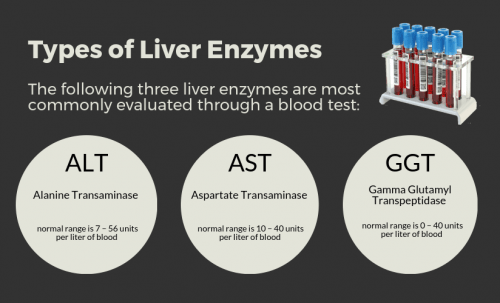 15 Comparison with elevated levels of other blood parameters
15 Comparison with elevated levels of other blood parameters 19.0.8 How long do elevated levels of Alt and Ast persist in women after drinking alcohol?
19.0.8 How long do elevated levels of Alt and Ast persist in women after drinking alcohol?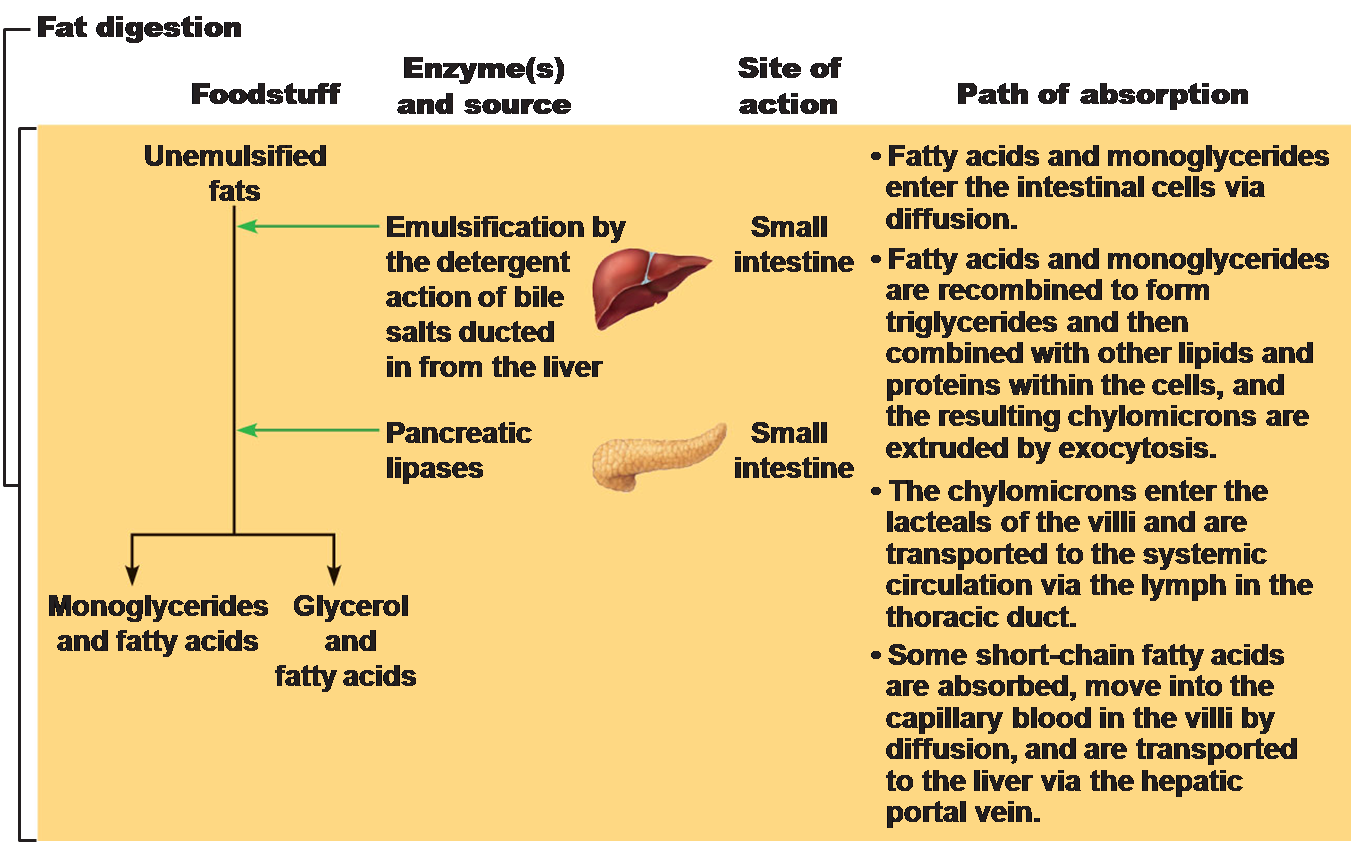 Some medications, such as aspirin, pain pills, and antibiotics, can increase blood levels of these enzymes.
Some medications, such as aspirin, pain pills, and antibiotics, can increase blood levels of these enzymes.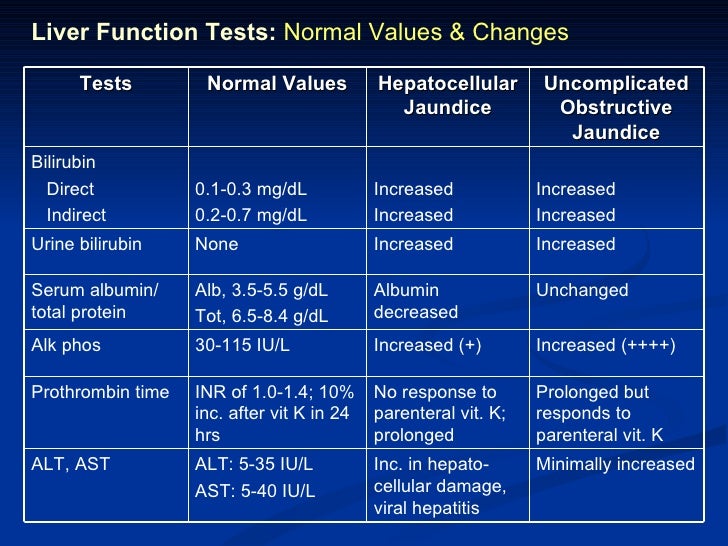 At the same time, ALT levels may rise earlier than AST.
At the same time, ALT levels may rise earlier than AST.